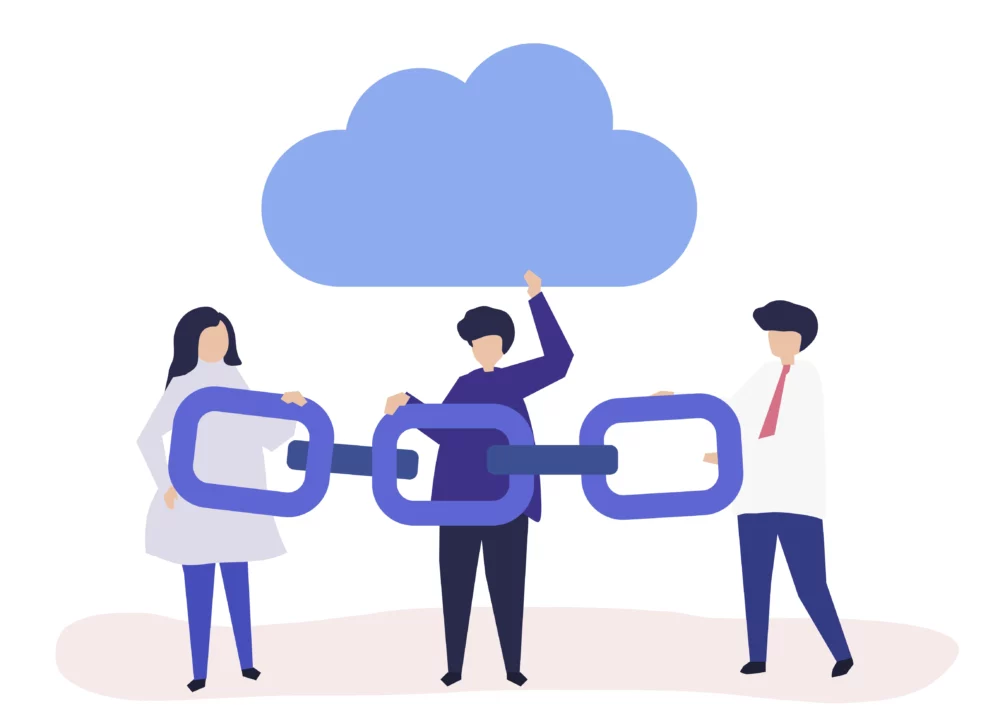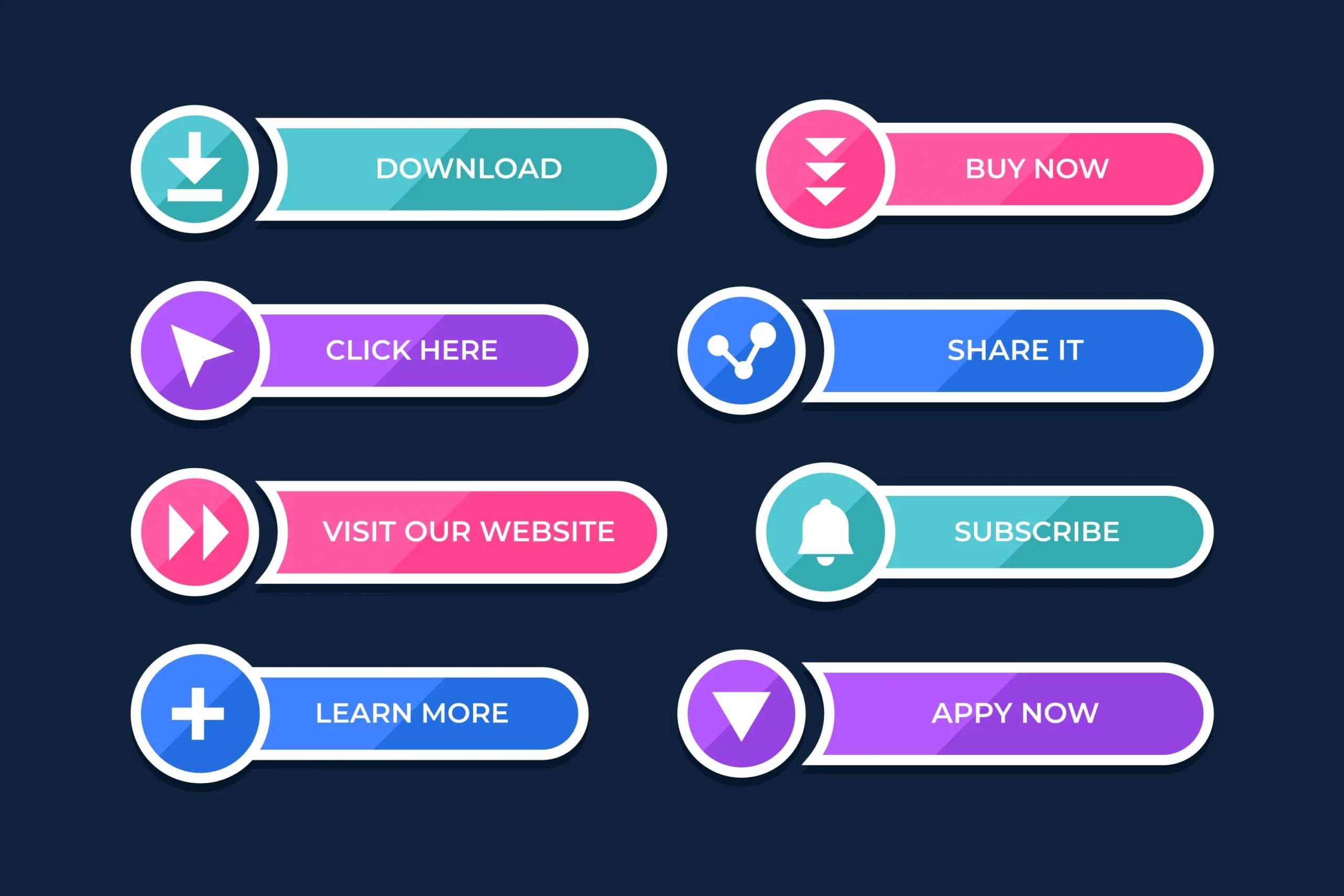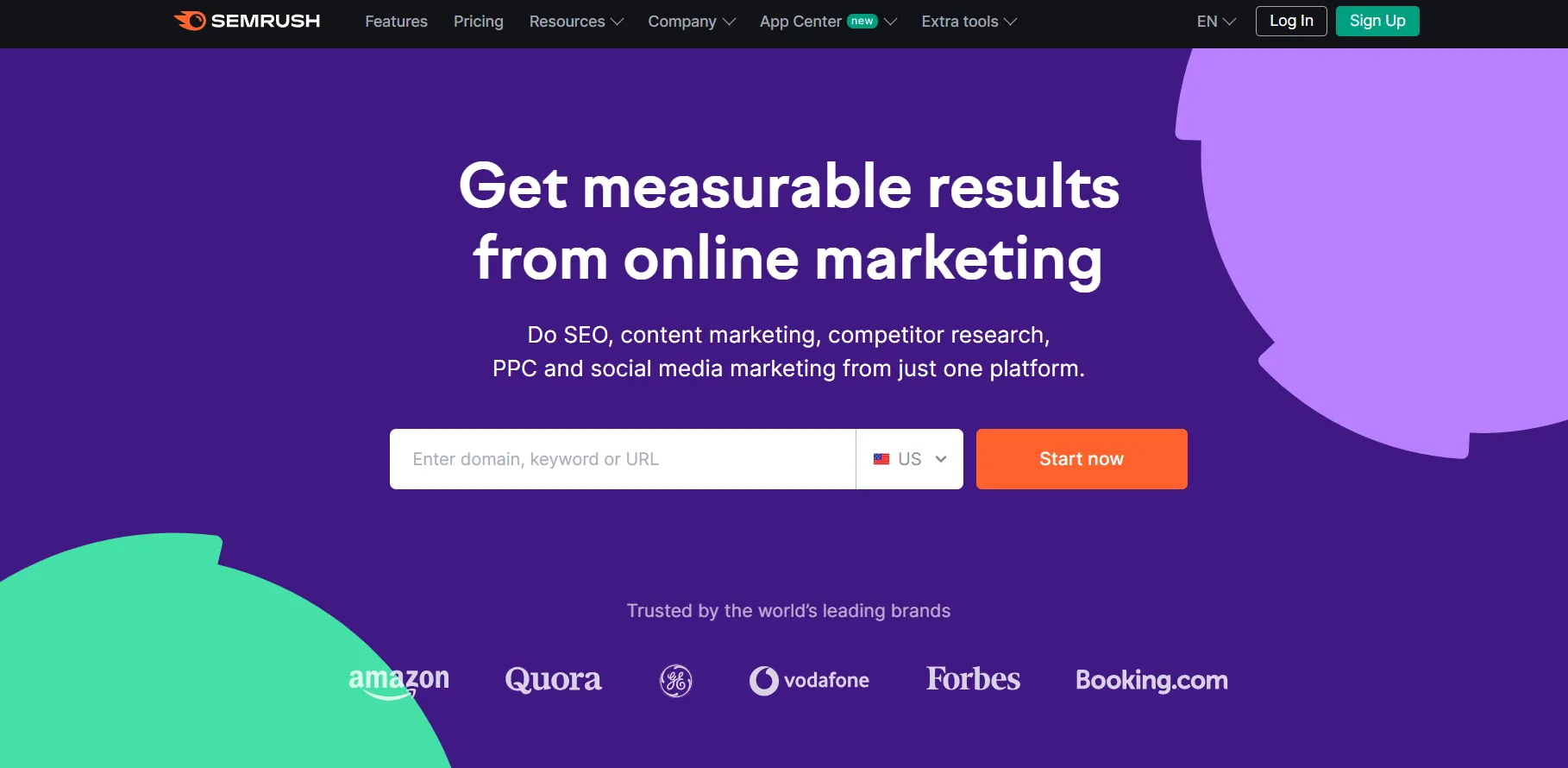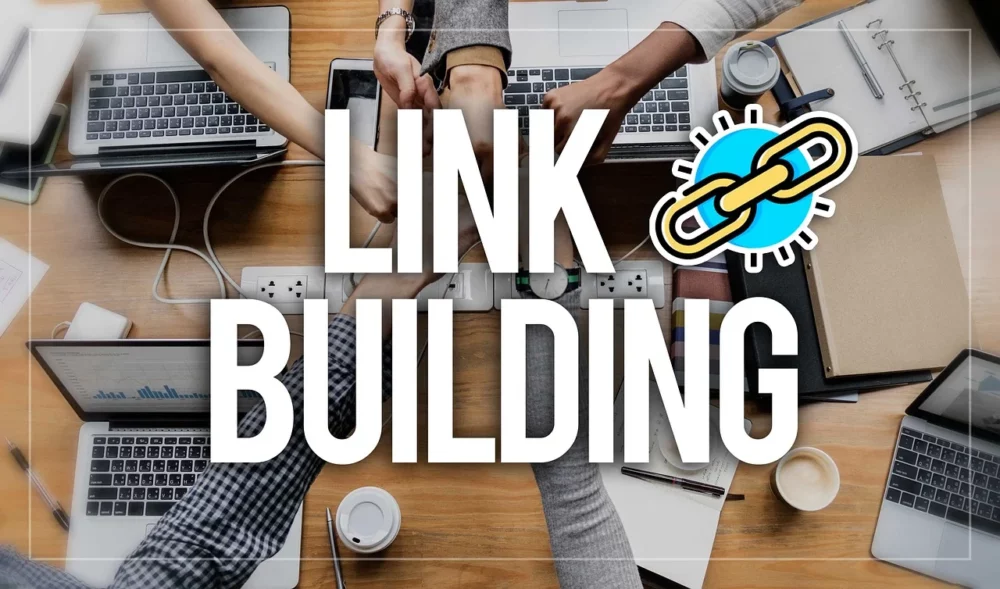Internal links are like the foundation of your website’s SEO. They help Google find and understand your pages.
Without good internal links, some pages might not get noticed by Google, leading to less traffic. Plus, if your links aren’t organized well, visitors might struggle to find what they’re looking for.
But with smart internal linking, you can improve your search rankings, get more traffic, and guide visitors to the right pages.
It’s like spreading SEO power across your site.
Here’s how to create effective internal links to boost your rankings and make your site more user-friendly for both people and search engines.
Let’s get started!
Content Outline
What are Internal Links?

Internal links are like pathways within your website. They’re links that connect one page of your website to another page on the same site. Unlike external links that lead to different websites, internal links keep users within your site.
For instance, the buttons on your website’s menu are internal links. When you click on them, you’re taken to other pages within the same website.
Think of internal links as similar to backlinks, but they connect pages within your site instead of from another site.
Just like backlinks, internal links help to share the importance and authority of one page with another page on your site.
Why are Internal Links important for SEO?
Quality internal linking is essential for any solid search engine optimization strategy, apart from how Google crawls the web using links.
1. Improve User Experience
Good internal linking means making it easy for visitors to navigate your website. When visitors can easily find what they’re looking for, they’re happier, stay longer on your site, and are more likely to come back.
This is good for both users and search engines like Google.
On the flip side, bad internal linking makes it hard for visitors to navigate your site. This leads to frustration, shorter visits, and fewer people sticking around to explore more pages.
It’s like trying to find your way in a maze with dead ends everywhere. This poor experience can hurt your site’s performance and turn visitors away.
2. Increase rankings
Internal links are like connections between pages within your website. They work similarly to backlinks, which are links from other websites to yours.
When you have internal links, they pass authority from one page to another within your site. This helps improve your site’s visibility on search engines like Google.
It’s like giving a boost to certain pages so they show up higher in search results when people look for related topics. So, by using internal links, you’re basically helping your pages become more visible on the internet.
3. Increase Indexing
Search engines like Google have a certain limit to how many pages they can crawl and index from your website within a specific period. This limit is called a “crawl budget.
“For smaller websites, this usually isn’t a problem because all pages can fit within this budget. However, for larger websites with many pages, not all pages may get crawled and indexed within this budget.
Internal linking helps by guiding Google to discover and prioritize the important pages on your site, allowing them to be crawled and indexed faster.
This ensures that more pages from your website get included in search engine results within the limits of your crawl budget.
4. Increase conversions

Calls-to-action (CTAs) are prompts or buttons on a website that encourage visitors to take specific actions, like signing up for a newsletter, making a purchase, or requesting more information.
They’re like gentle nudges that guide users through their journey on the website. CTAs are important because they help turn website visitors into customers or leads.
In the world of SEO (Search Engine Optimization), the ultimate aim is to turn website traffic into revenue. CTAs play a crucial role in achieving that goal by prompting visitors to take actions that lead to sales or other desired outcomes.
Types of Internal Links
There are four main types of internal links that you should have on your website:
Main navigation links:
These links are part of the menu at the top of your website and are visible on every page. They help visitors navigate to different sections of your site.
Footer links:
Similar to navigation links, footer links appear at the bottom of every page on your website. They provide additional navigation options and can include important pages like contact information, privacy policy, and terms of service.
Sidebar links:
These links are typically found on the side of a webpage, especially on blogs. They can be used to showcase popular posts, related articles, or calls to action, helping visitors explore more content on your site.
Contextual links:
These links are embedded within the body of your content. They can point to related articles, resources, or other relevant content on your site, providing additional information or guiding visitors to take specific actions.
9 SEO best practices for internal link building
Let’s look at the most important steps to optimizing your internal links. It’s time to implement an effective internal linking strategy!
1. Link from authority pages to pages that almost rank

An authority page on your website is a page that has already gained a lot of backlinks and PageRank, making it more trustworthy and influential. By using internal links, you can transfer some of that authority to other important pages on your site.
To identify your authority pages, you can use tools like SEMRush (which you have to pay for), Ahrefs (also paid), or Google Search Console (which is free). Look for reports or sections that show your top pages, which are the ones with the most backlinks from reputable websites.
Once you’ve found your authority pages, look for other pages on your site that are ranking well but not quite at the top of search results.
These are the pages that can benefit the most from a boost in authority. You can find them using tools like Ahrefs by filtering your top pages to show those ranking between positions 2 and 9 on the search results page.
Now, all you have to do is add a link from your authority page to the high-ranking page, and you’re good to go! This internal link will help elevate the ranking of the target page, potentially pushing it to the top of search results.
2. Place contextual links within the page copy

Contextual links are links placed within the main text of a webpage that connects to other relevant pages on your website. These links are related to the topic being discussed and help readers explore more about the subject or continue their journey on your site.
It’s important not to randomly add links to reduce the depth of your site’s architecture or to pass on link value. Only link to pages that are directly related to the current topic or that provide helpful information to the reader.
Contextual links can be integrated directly into the text, placed in a “further reading” section at the end of an article, or presented in a separate box within the article.
Regardless of where they’re placed, ensure that they fit naturally within the content and contribute to the reader’s understanding or exploration of the topic.
3. Use internal linking to reduce page depth (link deep)
Page depth refers to how many clicks it takes for a visitor to reach a specific page from the homepage of a website. The deeper a page is (meaning it requires more clicks to get to), the harder it is for search engines like Google to find and explore it.
Google tends to prioritize pages that are closer to the homepage because they appear to be more relevant.
Ideally, you want to keep your important pages within 1-3 clicks from the homepage to signal their importance to Google.
To bring pages closer to the top and improve their chances of being crawled and indexed by Google, you can:
Include sections like “related posts” or “recommended products” on your pages to create a customizable sub-navigation.
Please increase the number of posts or products shown on category pages, making it easier for visitors to browse them with fewer clicks.
Use clear website navigation to ensure that core pages are just one click away from the homepage.
Expand the number of categories (for articles or products) using a hub and spoke model, which organizes content hierarchically for easier access.
4. Use hubs and spokes to boost rankings
The hub and spoke model is a method for organizing information and structuring internal links on your website based on topics.
Here’s how it works:
Hubs: These are like central hubs that cover big, broad topics that you wouldn’t be able to cover in detail on a single page. They’re similar to category pages.
Spokes: These are individual articles that delve deeper into specific aspects or subtopics of the big, broad topic covered by the hub. They’re like subcategories.
Links: Links connect hubs to spokes, spokes to spokes, and spokes back to hubs, keeping them all related topically.
Using this model can:
Make it easier for users to navigate your website by providing a central hub for core topics.
Reduce the number of clicks needed to access related articles by grouping them under one hub.
Distribute page authority more effectively by linking related content.
Improve your website’s authority on specific topics by helping search engines understand the connections between pages.
Prevent pages from being isolated without any links pointing to them, ensuring that all content remains accessible and interconnected.
5. Use descriptive anchor text in internal links
Anchor text is the clickable text of a link, like “click here” or “learn more.” It helps search engines understand what the linked page is about. While Google hasn’t confirmed its importance, some signs suggest it affects rankings.
Using descriptive anchor text gives visitors and Google more context about where the link leads. When creating internal links, it’s best to use natural-sounding anchor text that fits with the content. Avoid using too many keywords in the anchor text, as it can look spammy to Google.
6. Update older pages with internal links to new posts
A simple but effective strategy that’s often forgotten is adding links from older articles to newer ones.
Every few months, go back to your old posts and add links to any new content that’s related. This helps readers discover your latest articles and improves the visibility of your newer pages.
7. Don’t use too many internal links
Back in 2009, Google suggested keeping the total number of links (both internal and external) on a single page below 100 to ensure they all get followed.
However, more recently, Google has indicated that having over 100 links isn’t necessarily a problem. Still, having too many links can overwhelm users and make them look spammy.
If a webpage has 300 or more links, it might not be easy to navigate. Plus, the more internal links on a page, the less authority each link passes on.
So, it’s best not to add too many links just for the sake of it. If you’re using WordPress, tools like the Yoast SEO plugin can help you keep track of how many internal links each page has.
8. Reclaim Link juice by fixing broken internal links
According to SEMRush, almost half of all websites (42.5%) have broken internal links. These are links that lead to web pages that don’t exist anymore.
If you’ve ever been through a website redesign or migration where URLs change, you’ll understand how messy broken internal links can become.
Fortunately, finding and fixing broken links is quite simple. You can type in your website’s domain into a tools which scans your site for broken links automatically. Alternatively, you can browse for 404 errors in Google Analytics to identify broken links that need fixing.
9. Use dofollow links 99.99% of the time
All links, whether they’re inside your website (internal) or outside (external), can be either “dofollow” or “nofollow.”
Dofollow links tell search engines like Google to pass along authority or “link juice” to the linked page. This means search engines follow these links and see them as trustworthy.
Luckily, most links are automatically dofollow, so you don’t need to do anything special to make them this way.
Nofollow links, on the other hand, signal to search engines not to pass on any authority to the linked page. This means search engines ignore these links.
Nofollow links are like saying you don’t completely trust the page you’re linking to. To make a link nofollow, you have to update its HTML code manually.
In most cases, especially when you’re linking within your website, you’ll want the links to be dofollow. The only time you might use nofollow for internal links is if you don’t want a particular page to show up in Google’s search results. But remember, you’d also have to set that page to “noindex” to achieve that.
FAQs
❓Why is internal link building important for SEO?
Internal links help distribute page authority and ranking power throughout your site, which can improve the visibility of less prominent pages. They also help search engines crawl and index your site more effectively, contributing to better search rankings.
🤔What is the best way to use anchor text in internal links?
Use descriptive and relevant anchor text that provides clear context about the linked page's content. Avoid over-optimization and repetitive use of exact-match keywords to keep the linking natural and user-friendly.
👀Can internal linking affect my site’s crawl budget?
Yes, effective internal linking can help search engines crawl your site more efficiently, making the best use of your crawl budget. Poorly managed internal linking, however, can lead to crawl traps and wasted crawl budget on low-value pages.
👉How can I identify opportunities for internal linking?
Regularly review your content to identify relevant connections between pages. Use tools to analyze your site's current link structure and find pages that are isolated or have low page authority, which could benefit from more internal links.
Quick Links
- How to Promote Affiliate Links?
- How To Make Money With Amazon Affiliate Program?
- Guide To Find The Most Profitable Niche For Affiliate Marketing
- What is the Difference Between a Private & Public Affiliate Network?
Wrapping up
By now, it should be evident that internal links play a crucial role in boosting your SEO efforts.
Follow the advice provided in this article. You’ll see improvements in your search engine rankings, increased visibility of your web pages, more conversions, and an enhanced user experience—all thanks to effective internal linking strategies.
Incorporating these tips into your SEO approach can lead to quick and significant improvements, making internal linking a valuable asset in your SEO toolkit.
